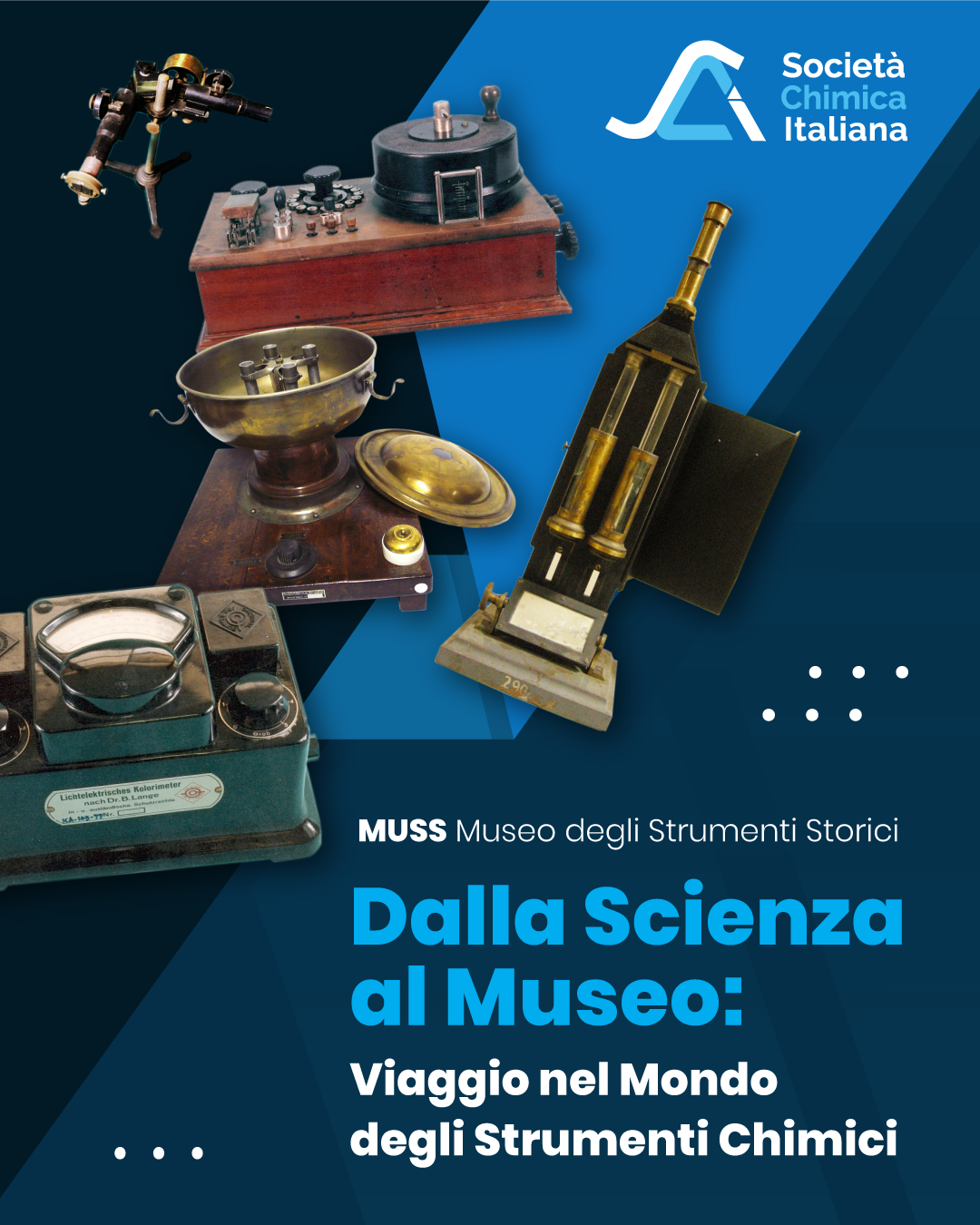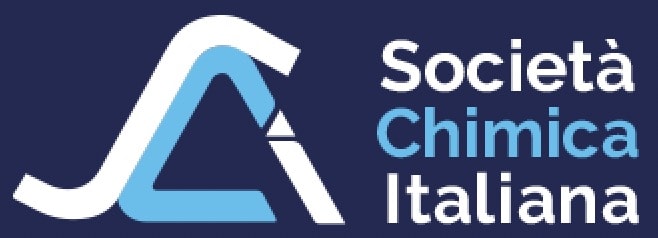- English
- Italiano
Chemistry Museums
Chemistry Museums in Italy
A Journey Through Science, History, and Passion
Chemistry is everywhere. But to truly understand it—to experience it firsthand and grasp its impact on our daily lives—there is nothing quite like visiting a chemistry museum.
Italy is home to numerous museums, collections, and exhibitions dedicated to chemistry and its history. Often hosted within universities, research institutes, or historic laboratories, these places preserve a unique scientific and cultural heritage that continues to inspire students, enthusiasts, and future researchers alike.
This section provides information on chemistry museums located in various Italian cities. The goal is to support the creation of a national museum network focused on chemistry—an initiative promoted by the Senior Group of the Società Chimica Italiana.
The "Giacomo Ciamician" Chemistry Collection, officially established in 1983, includes a wide range of scientific instruments from the last decade of the 19th century. These devices were used both for research purposes and as teaching aids for students. The collection is on public display in glass-fronted cabinets located along the main corridors of the department.
The Chemistry Museum of the Department of Chemistry and Industrial Chemistry at the University of Genoa is located at Viale Benedetto XV, 3, in the building that once housed the University’s Institute of General Chemistry and now hosts the administrative offices of the School of Mathematical, Physical and Natural Sciences.
The Museum is set up in a fully preserved early 20th-century laboratory, a feature that gives the space a truly distinctive—and likely unique—character.
The Museum houses around 650 scientific instruments and objects, many of which are chemical apparatuses used either for research purposes or during lectures for demonstrative experiments. A significant portion of the collection dates back to the second half of the 19th century, a period during which chemistry studies began to flourish in Genoa—largely thanks to Stanislao Cannizzaro, who was active at the university from 1855 to 1861. His presence greatly contributed to the modernization of the department and the acquisition of cutting-edge equipment for that era, such as the analytical balance pictured below. Over time, the collection has grown to include even more complex physico-chemical instruments.
Taken as a whole, the collection illustrates the evolution of chemical sciences over the past two centuries—from simpler apparatuses inherited from alchemical practice (such as retorts, mortars, funnels, flasks, and charcoal furnaces), to more specifically chemical instruments (like Kipp’s apparatus and analytical balances), and eventually to large-scale devices used for processing mineral ores and isolating rare earth metals such as lanthanum, cerium, and others.
The rooms of this Museum have been furnished with three chemical workbenches and numerous display cases showcasing the apparatuses and instruments in the collection. These items reflect the various research themes pursued in Palermo over the years, and their diversification—especially following the establishment of the Institute of Organic Chemistry in 1951 and the Institute of Physical Chemistry in 1961.
It was Stanislao Cannizzaro who first advocated, from the moment of his appointment as Full Professor of Organic and Inorganic Chemistry in 1861, for the creation of a modern and fully equipped chemistry laboratory at the University of Palermo. His vision was to provide a space not only for his own research and that of his assistants, but also for students’ practical training, thus fostering an integrated academic and scientific environment.
The collection of historical scientific instruments of the Department of Chemistry and Industrial Chemistry is located on the ground floor of the building at Via Moruzzi 13, University of Pisa.
Most of the instruments are housed in two large display cases, while others are positioned in front of and beside the main lecture hall, also on the ground floor. In addition to the instruments visible in this highly frequented area of the Department, other items—such as laboratory glassware, reagents, historical documents, and rare books—are scattered throughout offices, laboratories, and corridors.
Some of these objects date back to the early days of modern chemistry, while others originate from the late 19th and early 20th centuries. Still others are more recent, yet remain of significant historical and scientific value.
The "Primo Levi" Chemistry Museum is located on the ground floor of the Department of Chemistry (Cannizzaro Building) at Sapienza University of Rome.
Established in 1986, the museum was opened to the public in 1992 and was officially named "Primo Levi" during a ceremony held in the spring of 2010.
The museum covers an area of approximately 250 square meters, divided into two rooms: one with a historical focus, and the other dedicated to interactive scientific experiments.
The collection includes scientific instruments, teaching tools, chemical substance samples, and documents once belonging to Stanislao Cannizzaro and his research group, dating back to 1872, the year Cannizzaro arrived in Rome and founded the Royal Institute of Chemistry. Notable items include cryoscopes, ebullioscopes, thermometers, early elemental analysis instruments, colorimeters, spectroscopes, and Von Schroeder’s diagrams of the first industrial chemical plants. Also on display are several instruments for measuring radioactivity, built by G.A. Blanc, who worked at the same Institute in the early 20th century.
The Museum also features more recent chemical instrumentation.
Thanks to the large display cases visible from the entrance hall and corridors of the Department, visitors can get an initial view of the Museum as soon as they enter the building.
MU-CH, the Chemistry Museum, is located in Settimo Torinese, within the former SIVA paint factory, where Primo Levi worked as a chemist from 1947 to 1975. It is an interactive museum with a strong experiential focus, dedicated to Chemistry and the STEAM disciplines (Science, Technology, Engineering, Art, and Mathematics).
At the heart of the museum project is a commitment to science communication, especially aimed at younger audiences, through educational activities for schools and a visitor experience tailored to all age groups. However, the museum also offers dedicated sections and activities designed to engage adults and families, enriching the overall visit.
The MU-CH was created with the aim of establishing a space for discovery and connection, where visitors of all ages can enjoy an immersive and engaging journey into the world of science.
The museum’s mission is to spark curiosity, entertain, inspire, and educate.
MiC's Virtual Catalog
Chemistry in Italy’s Cultural Heritage
The MiC Virtual Catalog is part of the General Catalog of Cultural Heritage maintained by the Italian Ministry of Culture, within the section dedicated to Scientific and Technological Heritage.
It includes over 1,070 entries related to chemistry, each accompanied by a detailed descriptive record documenting the nature, use, origin, and historical context of the item.
These records represent a valuable resource for scholars, teachers, students, and enthusiasts, providing a broad and well-documented overview of the instrumental, educational, and museum heritage connected to chemistry in Italy.
This tool is useful for:
- Identifying historical chemical artifacts held in museums, schools, laboratories, and archives;
- Exploring the geographic distribution of Italy’s scientific heritage;
- Supporting research, outreach, and the preservation of materials of historical and scientific interest.
A project led by Prof. Luigi Campanella
MUSS - Museum of Historical Instruments
The MUSS – Virtual Museum of Historical Instruments is an initiative promoted by the Italian Chemical Society (SCI), conceived and coordinated by Prof. Luigi Campanella with the collaboration of a group of SCI members.
The project was created with the aim of rediscovering, documenting, and enhancing the instrumental heritage of Italian chemistry: historic scientific instruments, often hidden away in university laboratories, research centers, or industrial settings, which represent a fundamental part of the history of science in Italy.
Through a continuously updated digital catalog, the virtual museum collects:
- Technical and historical descriptions of the instruments;
- Images and contextual details;
- Information on their origin and original use.
This is a patient and passionate endeavor combining scientific rigor with historical memory, intended to preserve and make accessible a valuable part of Italy’s chemical heritage.

